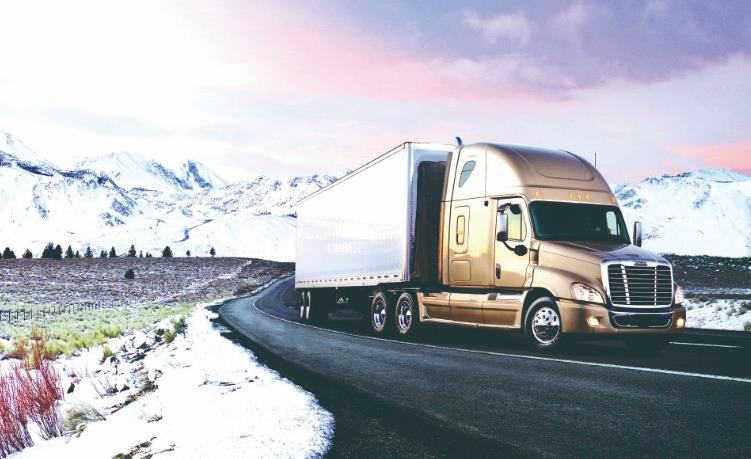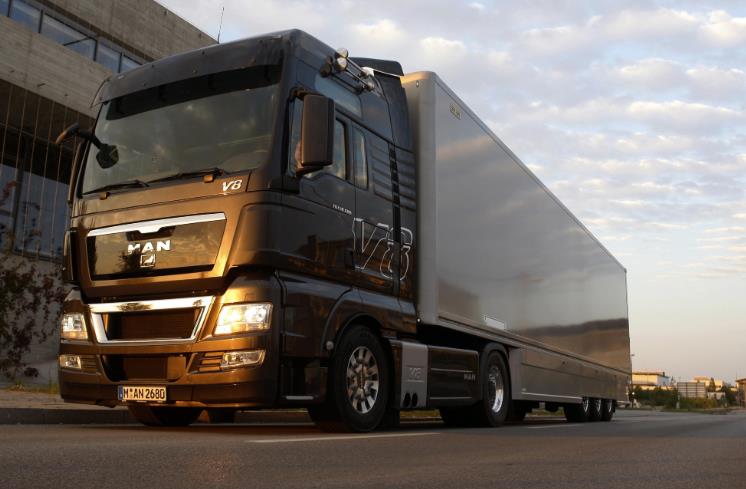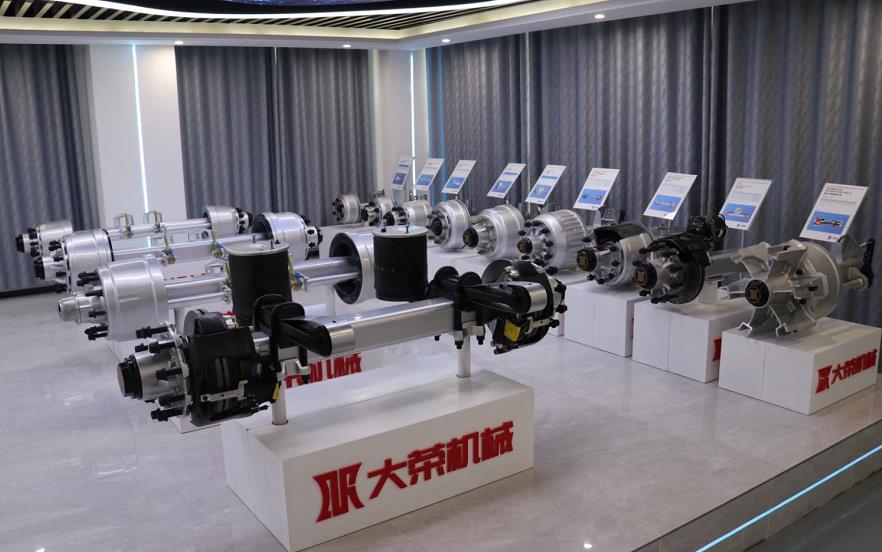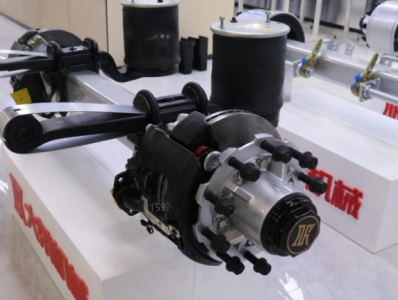Which vehicle braking method is the safest and most sensitive?
In all the configurations of the vehicle, the brake system is the most basic safety guarantee, once the brake system fails, other high-end configurations can only become empty talk. There is a saying that the performance of a car is not judged by how fast it can run, but by whether it can stop smoothly and safely no matter how fast it runs.

There are many kinds of vehicle braking methods, in addition to the gas brake, oil brake, and line brake, air brake, exhaust brake, electromagnetic brake and so on. Today, DARO trailer axle will take stock with you, the more common braking methods and their main characteristics on those vehicles.
1. Air brake
Air brake refers to the compressed air as the medium of the brake system, generally by the air compressor, brake valve, brake chamber, air reservoir, pressure gauge, air pump, pressure spring, safety valve, brake pipeline and other components.
How it Works:
Pneumatic drive is used to realize dynamic braking.
When the vehicle stops, the push rod of the brake chamber controls the brake in the braking state under the action of the spring force;
After the vehicle starts, the air pump runs, and when the brake chamber push rod overcomes the spring force under the action of air pressure, the brake brake state is released, and the car can run;
When it is necessary to brake, the brake pedal controls the brake valve, so that the pressure in the brake chamber is released, and the push rod brakes under the action of the spring force.
Simply put, there is gas can walk the car, no gas can not walk the car.
Advantages:
The reaction speed of the air brake is fast, the braking force is strong, the size of the braking force output is only related to the air pressure size and the opening degree of the valve in the air reservoir, and has nothing to do with the strength of the understepping, it is not easy to slide in the road condition on and down the slope, the full load can be stopped at high speed, and the sudden braking is not easy to roll over.
Cons:
The air brake structure is relatively complex, the installation space required is relatively large, in addition to the later maintenance and use is relatively complex, brake wear is more obvious, frequent stepping on the brake pedal when going downhill will also lead to insufficient pressure, brake failure, some old cars need to idle for a period of time after parking, this problem is also more difficult to solve.
Applicable vehicle type:
It is mostly used in large trucks, large buses and other models with higher load capacity.

2. Oil brake
The oil brake refers to the way of braking through the power of the engine oil pump, and the brake power is transmitted through the brake oil to achieve the deceleration or stop of the vehicle. It is generally composed of a main pump, a sub-pump, an oil cup and a connecting pipe.
How it Works:
The oil brake uses high-density brake oil instead of steel wire. When the owner steps on the brake, the piston and seal bowl in the brake pump will be pushed by the brake pedal, the push rod acts, the brake oil is transmitted to the piston of the brake pump through the oil pipe, and then the friction sheet and the brake drum produce friction and brake effect.
Advantages:
Simple structure, small size, relatively small requirements for installation space, brake power output is relatively soft, step on how much output, not easy to lock, high riding comfort, fewer components, maintenance is more convenient.
Cons:
The reaction speed is slightly slow, the braking force is weak, and the oil brake system is designed with the oil circuit, which needs frequent maintenance. If the oil circuit is blocked or leaking oil, the maintenance cost will also increase accordingly.
Applicable vehicle type:
Generally used in small vehicles, in recent years, there has been a trend toward the development of medium-sized vehicles, such as trucks with a load of less than 10t, or medium-sized buses with 19 seats or less will also use oil brake devices.
3, hydraulic brake
The brake force is transmitted through the brake fluid to promote the friction between the friction plate and the brake drum and play the braking role.
In principle, the hydraulic brake is the same as the oil brake, many owners also call the hydraulic brake the oil brake, to be exact, the oil brake belongs to the hydraulic brake, but the brake oil is only one of the brake liquid.
4, exhaust brake
Exhaust brake is also called exhaust brake, which is also a brake method that users often consult.
How it Works:
Under normal circumstances, the exhaust brake valve is installed in the upper middle of the engine exhaust pipe, in the long downhill, the owner opens the exhaust brake switch, the exhaust valve is closed to a certain extent, but not completely closed, according to the pressure in the exhaust pipe to adjust the opening degree, so that the engine piston in the exhaust stroke by the reverse pressure of the gas, slow down the engine speed, brake effect.
Features:
Different from the air brake and the oil brake, the exhaust brake belongs to a kind of auxiliary brake, and its role is to slow down or maintain stability of the vehicle without using or using the service brake device, and can not achieve emergency stop.
Applicable vehicle type:
The exhaust brake is generally mostly used in freight vehicles, which is a supplement to service braking.
5, the air brake
Although the air brake sounds similar to the exhaust brake, the two are completely different. Air brake is also called energy storage spring brake, which belongs to a kind of parking brake, that is, a kind of handbrake system.
How it Works:
Air brake is equivalent to a powerful spring installed in the ordinary air brake pump, the spring is released when stopping, relying on a strong elastic force to push the brake push rod, so that the wheel is tightly braked by the brake, and plays the role of handbrake;
When the handbrake is released, the compressed air enters the parking brake air chamber and pushes the piston to push the spring back, so that the spring releases the pressure on the brake push rod and the brake is released;
When the owner needs to pull the brake again, the compressed air in the parking brake air chamber is discharged, and the spring is released again to push the brake push rod to produce braking force.
Features:
As we all know, the parking brake can generally only be used when the vehicle is stationary, because its braking torque is acting on the drive shaft, if it is used during driving, it is easy to cause serious overload of the drive shaft and the rear axle, and the rotation direction of the left and right wheels may be opposite due to the differential housing being locked, causing the car to run off or turn around when braking.
The air brake is different, because the parking brake travel of the energy storage spring is greater than the driving brake travel, and in the case of insufficient driving brake power, the energy storage spring can be used to assist the emergency braking.
Therefore, the air brake brake system can not only be used for parking braking, but also for emergency braking.
Applicable vehicle type:
Most of them are used in the handbrake system of medium and large vehicles, such as large trucks, buses, and buses. At present, some rear brake sub-pumps also use the air brake.

6. Electromagnetic brake
In large tonnage trucks or large buses, the electromagnetic brake can be used as an auxiliary brake device, also known as eddy current retarder, its principle is to use the electromagnetic field generated by the resistance to slow down the vehicle driving, slow down the brake system wear.
On the trailer such as the RV, the electromagnetic brake mainly controls the brake signal and braking force through the current, and uses the brake controller to connect with the braking system of the front car to synchronize the braking signal of the front and rear cars. The effect of the electromagnetic brake is closely related to the controller, and the inferior controller is difficult to accurately adjust the braking force, even if it is adjusted well, it can not be maintained, and it needs to be adjusted often.
Advantages:
The braking effect is more stable, and the braking force can be adjusted at any time to adapt to the braking ability of different front vehicles and different drivers' braking habits. The high-specification electric brake can even automatically increase or decrease the braking force according to the slope of the road based on the adjusted braking force to improve safety. In addition, there is an emergency switch on the brake synchronizer to help the front car stop if the brake fails.
Cons:
The structure is complex, the brake synchronizer needs to be installed on the front car, and the line connection is long, which is prone to problems.
7. Line brake
Wire brake is a mechanical brake method with relatively simple principle and structure, which is generally composed of wire disc, wire V and wire crane.
How it Works:
Use the force of the metal brake line to pull the piston and push the brake pad to brake.
Advantages:
Simple structure, light weight, convenient installation and maintenance, the price is relatively cheap.
Cons:
When installing, it is necessary to consider the wiring problem, insufficient braking force, large reaction and poor stability.
Applicable vehicle type:
It is generally used for small cars with special working conditions, such as agricultural machinery.
8. Hit the brake
As the name suggests, it refers to a way of braking through the impact between the tow and the car in front.
How it Works:
When the front car is in the braking state, the tow truck will produce a forward force due to inertia. At this time, the collapse mechanism at the connection between the tow truck and the front car will be compressed, and the brake line will be tightened and the wheel of the tow truck will be braking.
Because there is a hard link between the front car and the tow truck, there is no need to worry about the tow truck will hit the front car. Some bump-brake devices are effective when the speed of the rear car is faster than the front car, some are only effective when the wheel is turning, and others are effective when a certain speed is reached.
Advantages:
Simple and reliable, as long as you pay attention to maintenance, the probability of the system itself is very small.
Cons:
The crash brake is a passive brake, the owner can not control the strength, climbing can not brake, in some extreme circumstances, such as driving too fast, bending the brake or reversing from the slope down the slope, there is a certain danger.

Applicable vehicle type:
It is mostly used for lightweight trailers, generally less than 1.5t.
The characteristics of these braking methods are different, and which one is the safest depends on the degree of matching with the model. For example, ordinary vehicles, the oil brake is better, but medium and large transport vehicles are better. When the owners choose the braking method, they should also start from the model and comprehensively consider the transportation conditions and use needs of the vehicle, after all, the one that suits them is the best.







